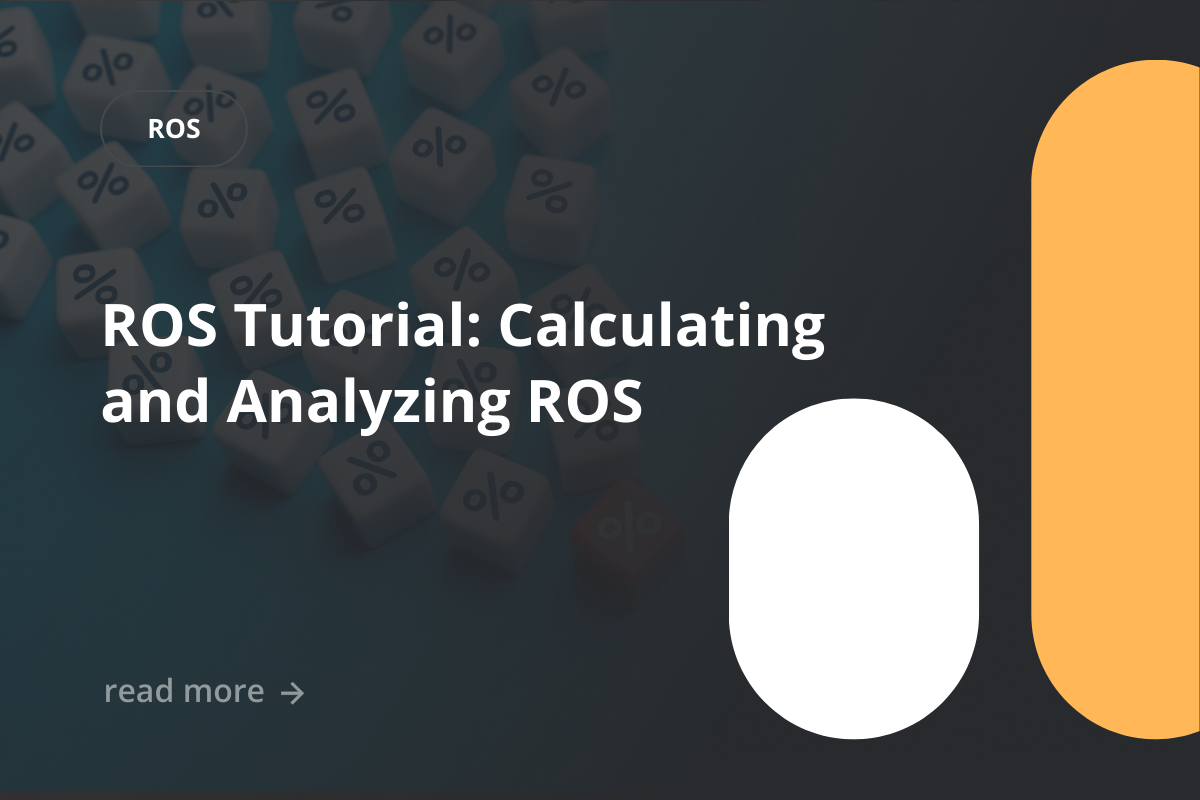ROS Tutorial
We’re sharing an easy-to-follow ROS tutorial to help you understand why Return on Sales is so important for a company’s efficiency and profitability. If you’re new to the concept, learning about ROS can improve your financial decision-making and help you allocate resources more effectively. In this guide, we’ll break down why ROS matters, how to calculate it, and the best ways to analyze it for your business.
ROS Explained for Beginners
Return on Sales (ROS) is a key financial metric that helps gauge a company’s ability to convert revenue into profit. By examining profitability relative to sales, businesses can identify operational strengths and weaknesses. Thus, comprehending how to interpret ROS is vital for both new and experienced entrepreneurs.
The Significance of Return on Sales
Return on Sales serves as a litmus test for a company’s profitability and operational efficiency. It provides valuable insights that can assist stakeholders in making informed decisions. Companies can leverage ROS to enhance their competitiveness in the market.
Why is ROS important in business?
The answer lies in its ability to benchmark a company’s performance against industry standards and competitors. A high ROS indicates good management practices and effective cost control.
Calculating ROS: A Step-by-Step Guide

Calculating Return on Sales involves a straightforward process that can be easily applied. A systematic ROS calculation enables businesses to accurately assess their financial standing. However, it is critical to avoid common mistakes in calculating ROS, as these can lead to misleading conclusions.
ROS Tutorial – Calculation Explained
To calculate ROS, financial analysts divide a company’s operating profit by its total sales revenue and express the result as a percentage. This simple formula provides clarity on how efficiently sales are being transformed into profits.
Formula for Calculating ROS
The formula for calculating ROS is as follows:

This calculation can give a clear picture of a company’s financial health.
Common Mistakes in Calculating ROS
When calculating Return on Sales, it’s essential to avoid common mistakes that can skew results. Mistakes in data entry, using inconsistent time periods for profit and sales, and misunderstanding different profit margins can lead to inaccurate ROS figures.
Analyzing ROS for Business Insights
Analyzing Return on Sales provides businesses with a host of insights that can drive growth and profitability. Moreover, various techniques and strategies can be employed to ensure that ROS gives a true reflection of business performance.
Return on Sales Analysis Techniques
Using a variety of techniques, including trend analysis and competitor benchmarking, organizations can elevate their Return on Sales analysis. Here are some tips for analyzing ROS accurately:
- Regularly compare ROS over multiple periods to identify trends.
- Benchmark against industry averages to assess relative performance.
- Analyze the factors influencing ROS, such as operational costs and sales strategies.
Tips for Analyzing ROS Accurately
To effectively analyze ROS, it’s crucial to consider various business dimensions. Furthermore, by cautiously tracking operational changes and maintaining consistent reporting that accurately reflects the company’s performance, stakeholders can derive even more actionable insights. As a result, businesses can make smarter decisions to improve profitability.
- Use Reliable Data: Ensure consistency in data sources to avoid discrepancies.
- Compare Industry Benchmarks: Evaluate ROS against industry standards for context.
- Analyze Trends: Look at ROS over time to spot patterns and long-term performance.
Conclusion
To sum up, return on Sales is an invaluable metric that can provide profound insights into a business’s operational efficiency and profitability. Through understanding and accurately analyzing ROS, businesses can foster better decision-making and strategic planning. By following best practices in ROS calculation and analysis, companies can ensure they’re on the right path to success.
FAQs on ROS Tutorial
What is the basic formula for ROS?
The basic formula for ROS is found by dividing operating profit by total sales revenue and then multiplying by 100 to get a percentage. This rendering of ROS provides a quick overview of profitability.
How often should ROS be calculated?
It is beneficial to calculate ROS quarterly or annually to keep stakeholders informed about business performance.
Can ROS be used for all businesses?
Yes, ROS can offer insights for a wide variety of businesses. However, the context of the industry must be considered to provide accurate interpretations.
What impact does industry have on ROS analysis?
Industry factors can significantly influence ROS ratios, as different sectors have varying cost structures and profitability benchmarks.
What tips help in analyzing ROS accurately?
To enhance the accuracy of ROS analysis, consider regular calculations, industry comparisons, and a focus on specific financial factors affecting ROS.



